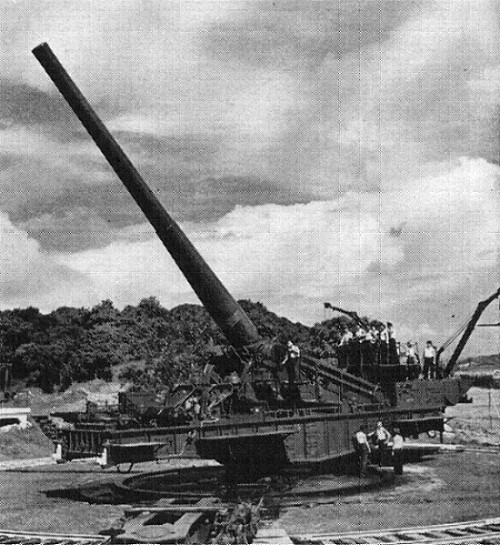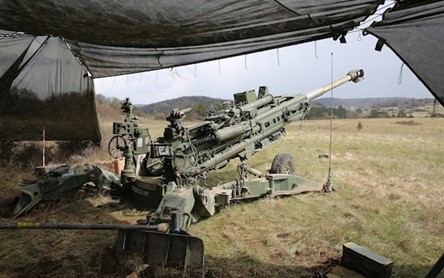As with many of the @USArmy Branches, Field Artillery was established in 1775. 

We do have another Branch, Air Defense Artillery, but they didn’t come into existence until the late 1960s. 

Actually, Air Defense Artillery was created from Anti-Aircraft Artillery, which was part of the Coast Artillery Corps, so maybe we should start with these guys. @XOofXOs 

In the late 1800s, the United States recognized a need for fixed artillery along the coast. The recommendations didn’t just start with fixed artillery – there was a whole program that included guns, mortars, and mines – and most of this was built by the Engineers @USACEHQ 

We organized Defense Commands which were initially called Artillery Districts, then rebranded in 1913 to Coast Defense Commands, and then rebranded again in 1925 to Harbor Defense Commands. 

Until 1901, the Corps of Engineers were responsible for things like the installation and control of mine fields in American harbors. This responsibility went to the Coast Artillery around 1901. 

This helped give the Coast Artillery a solid argument for getting specialized vessels that they could use to set up and manage the mine fields. 

After the Spanish-American War, Teddy Roosevelt tasked the Under-Secretary of War with updating our national defense fortifications. This guy: 

Upgrades included things like searchlights and other lighting, improved aiming techniques, and also the addition of forts in US territories that we got from Spain, namely Puerto Rico, Guam, the Philippines, and Cuba (which was a “protectorate” of the US). 

Taft also recommended setting up forts in Hawaii, and we were already authorized to set up defenses in Panama. 

Rapid advances in artillery technology and techniques started to see a wider gap grow between Artillery Branches, with the Coast Artillery becoming quite heavy by comparison, because they could be. 

Artillery Officers in the @USArmy generally stuck to one Branch or the other – rarely both. This led to a formal separation of the Branches in 1907 into Coast Artillery and Field Artillery, with the Coast Artillery Corps then authorized 170 companies. 



This also allowed for the creation of @NationalGuard Coast Artillery units, with the intent being that the National Guard units could ensure wartime-strength of the Coast Artillery Corps if the need arose👀
Here are Coast Artillery Troops training in 1918
When World War I came around, the Coast Artillery Corps was increased in size once the US entered the fight.
Coast Artillery provided trained Artillerymen for the rail-based and anti-aircraft artillery units crewed by Americans fighting in the war. The US Army didn’t have railway guns before entering WWI, many of the big weapons we used were French. 

But this experience inspired us to work on creating US-made guns suitable for coastal defense of the US homeland and US assets abroad.
During the Interwar Years, most of the regiments built up for WWI were disbanded and, as with the rest of the military (and much of the country), money was tight for those twenty years.
There was some competition with the @USNavy and gun development but for the most part funding was low and all Branches suffered.
In 1938, the @USArmy had six Active Duty Coast Artillery regiments and 13 in the National Guard which had been given the responsibility of “air defense” or “anti-aircraft” missions by the National Defense Act (1920).
We technically had 42 Anti-Aircraft regiments in the Army Reserve but they were far from functionally manned and many of them would be shut down before the late 1930s anyway.
We won’t talk about it too much just yet, but many may be wondering: If we had Coast Artillery with big guns in Hawaii, with Air Defense capability, what happened with Pearl Harbor?
The attack on Pearl Harbor showed us that our pre-WWII planning for Air Defense was woefully inadequate. Very few of the Coast Artillery guns were actually tasked with anti-aircraft responsibilities – most were positioned to fire on ships.
Coast Artillery continued to provide coastal defenses in the United States until about 1950. Since then, the Air Defense Artillery Branch has carried the Coast Artillery lineage.
With the exception of Anti-Aircraft units, the Coast Artillery really didn’t have a huge role in the Second World War, which is another reason we will keep this brief. 

All of the artillery operated overseas during WWII (except for a bit of fighting early on in the Philippines) was manned by Field Artillery, which we will discuss starting on Saturday. 

But for those interested, here are some resources on the Coast Artillery Corps.
Coast Artillery Organizational History, 1917-1950 Part I cdsg.org/wp-content/upl…
Coast Artillery Organizational History, 1917-1950 Part II
cdsg.org/wp-content/upl…
cdsg.org/wp-content/upl…
Coast Artillery in the Pre-War Era
history.army.mil/html/bookshelv…
history.army.mil/html/bookshelv…
Historical Sketches Coast Artillery Regiments 1917-1950
cdsg.org/wp-content/upl…
cdsg.org/wp-content/upl…
The Coast Artillery in WWI
cdsg.org/wp-content/upl…
cdsg.org/wp-content/upl…
Air Defense Artillery compiled by Janice E. McKenney
history.army.mil/html/books/060…
history.army.mil/html/books/060…
Order of Battle of the United States Land Forces in the World War: Zone of the Interior
314th.org/center-of-mili…
314th.org/center-of-mili…
250th Coast Artillery Camp McQuade, California 1941 freepages.rootsweb.com/~gregkrenzelok…
The Guard During World War II: A Look Back at the Coast Artillery
mil.wa.gov/news/the-guard…
mil.wa.gov/news/the-guard…
1st BN, 44th ADA Regiment (example of the lineage) history.army.mil/html/forcestru…
1st BN, 3rd ADA (another example of the lineage) history.army.mil/html/forcestru…
The US Army in Puerto Rico: Images from WWII history.army.mil/html/topics/hi…
FM 21-6 (1943) List of Publications for Training history.army.mil/museums/Arms-a…
If you're just tuning in or you've missed any of the previous threads, you can find them all saved on this account under ⚡️Moments or with this direct link twitter.com/i/events/13642…
• • •
Missing some Tweet in this thread? You can try to
force a refresh
























